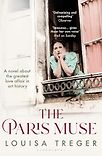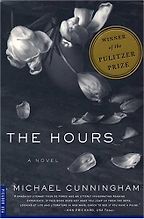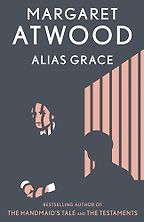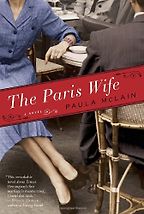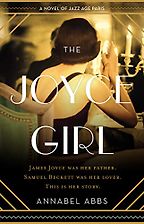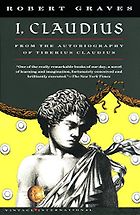Historical fiction is sometimes imagined, and sometimes recreates real people and events with as much accuracy as possible. Can you talk me through the reasoning behind these different approaches?
Historical fiction creates an interlacing of fact and fiction; a unique space where writers can bring the past to life while exploring the emotional and human truths that the history books might overlook. Some authors stay close to recorded events and real people in order to offer a deeper, more personal interpretation of them. Others use history more loosely as a backdrop for entirely invented stories and characters. This allows greater creative freedom. Both methods engage the reader’s empathy, allowing them to connect emotionally with the past.
What is your personal approach?
I love writing fictionalised biography because the facts are like the framework of the plot, and I know there’s an interesting story there. At the same time, it harnesses the liveliness and veracity of fiction writing. It gives me the freedom to fill in the imaginative gaps left by straight biography, to access the emotional depths of the characters and bring to life the historical feelings as well as the facts. So I base my books on the outline of the plot, which is already there, but within that framework I create my own image of real people.
You mentioned the veracity of fiction writing. Do you think a historical novel can be as factual and informative as a biography?
Straight biography is only as reliable as its sources, which are often memoirs, letters or recollections of friends, and those are pretty subjective. Prominent figures, from Virginia Woolf to Henry Kissinger, have had several biographies written about them, which portray them very differently. Everyone has a different image of the same person. While I write, I create my own sense of real people, based on facts.
Let’s move on to the first work of historical fiction about real people that you’ve chosen to recommend: The Hours by Michael Cunningham. It won the Pulitzer Prize for Fiction and has been turned into a successful film. Can you tell me a bit about it?
In this novel, Michael Cunningham weaves together a day in the life of three women across three different time zones. Each is grappling with despair and struggling to find her place in the world. All three women are connected to a fictional woman, Mrs. Dalloway. In fact, The Hours was the original working title for Mrs. Dalloway.
This is the book that made me want to write biographical fiction, because it shows what you can do with the genre. It’s so vivid! The first storyline is a fictionalised biography of Virginia Woolf herself. The year is 1923, and she is recovering from a mental breakdown while immersed in writing Mrs. Dalloway. Throughout all three narrative strands, mental illness is a haunting spectre. In the case of Virginia Woolf, she’s terrified that it will come back, but at the same time it informs the writing of Mrs. Dalloway. It gives her the insight and the personal experience to write the Septimus Smith sections of the book; he is a war veteran who is traumatised by what he’s seen. The second narrative follows Laura Brown, a 1950s housewife in Los Angeles. She is suffocated by marriage and motherhood, and finds some relief in reading Mrs. Dalloway. The third is about Clarissa Vaughan in New York in the early 2000s. She’s planning a party for her best friend, a poet who has just won a major award and is dying of Aids. Clarissa’s story is based on the plot of Mrs. Dalloway.
There’s a crafted literariness to the novel, which is a little bit self-conscious but I also found it deeply rewarding. It is rich with recurring motifs like mirrors or moments of intense awareness or luminescence, and these motifs run through all the narrative strands. And it’s stuffed with allusions to Mrs. Dalloway. Because I love Virginia Woolf’s writing, that made the novel even better for me, but I think it can be enjoyed as a standalone without prior knowledge of Woolf. The Hours is exceptional, and it really inspired me.
With historical fiction that weaves together different time periods like this, does it feel like the characters represent the times they live in?
Michael Cunningham has a real gift for capturing fleeting emotions and characters’ inner lives. I think what it felt like to be them and how they’re connected is the focus of the story. The emotional life is the centre, but he does illuminate the time periods they lived in.
Your next pick is the award-winning Alias Grace by Margaret Atwood. Would you introduce us to it?
I’ve always been a massive fan of Margaret Atwood, and Alias Grace is one of my favourite novels. It’s based on the real-life story of Grace Marks, one of Canada’s most notorious murderers. In the mid-19th century, when she was only 16, she and a stable hand called James McDermott were accused of killing their employer, Thomas Kinnear, and his pregnant housekeeper and mistress, Nancy Montgomery. McDermott was hanged for the murder, and Grace was given life imprisonment and shuttled between prison and an asylum.
Atwood tells the story largely through Grace’s version of events, but also through the perspective of Dr Simon Jordan, who is a young doctor in the emerging field of psychiatry. He is trying to help Grace recover her memory of the killing, because she claims to remember nothing. He begins by asking for her life story, and she takes him from her poverty-stricken childhood to the events leading up to the murders and her attempted escape with McDermott afterwards. Eventually, Grace’s memory appears to return under hypnosis, or is she just telling Dr Jordan what he wants to hear? The ending is shocking and ambiguous.
The novel presents a variety of sources. There is Grace’s story and Dr Jordan’s. There are letters, newspaper clippings, poems, and the published confessions of the accused. Atwood builds up the narrative in layers, which is rich and satisfying. The recurring image of a patchwork quilt becomes a perfect metaphor for the novel’s central theme: the multiplicity of truths embodied in Grace’s character. You never know whether she’s a naïve girl manipulated into violence, or a remorseless and calculating killer. I think the near impossibility of arriving at a single truth is one of Margaret Atwood’s enduring themes.
Another theme in the book is that the real imbalance between men and women isn’t about economic or physical power, it’s about credibility. Whether it’s Grace in 19th-century Toronto or, say, an actress accusing Harvey Weinstein, the woman’s story is always a little bit in doubt. One of the things I love about historical fiction is that it highlights issues that are still relevant today.
When a historical novel is not only about real people but also about a specific crime that took place, how does that influence the relationship between fact and fiction?
Alias Grace reads like a novel, even though there are nonfictional sources. I think one of the things that makes it so vibrant is Grace’s tone. Sometimes it’s innocent and sometimes it’s sly, sometimes it’s very wise, and sometimes it’s stoical. Alias Grace never feels like nonfiction because of all the ways Atwood plays with Grace’s tone. Dr Jordan has his own narrative that starts with him interviewing Grace, and then it kind of billows out into his life. It’s unexpected and gripping, and it reads like fiction. By including all these points of view and factual as well as imagined sections, Atwood is building a picture, not telling the reader what to think.
Next up on your list is The Paris Wife by Paula McLain, a bestselling novel which tells a fictionalised account of Ernest Hemingway’s marriage to Hadley Richardson.
I read this while I was writing my debut novel and it was very inspiring because, again, it showed me what biographical fiction could be. It is the story of Ernest Hemingway’s first marriage to Hadley Richardson, set in the dynamic and artistic world of 1920s Paris. It’s also a retelling of Hemingway’s A Moveable Feast, told from Hadley’s point of view. It gives voice to a pivotal and yet comparatively silent woman in a classic book, in the tradition of works like Jean Rhys’ Wide Sargasso Sea.
The Paris Wife explores their whirlwind courtship, their immersion in the expat literary scene of Paris and the eventual breakdown of the marriage. And it shows Hadley’s struggles to maintain her identity amid Hemingway’s growing literary fame and infidelities, including the affair with Pauline Pfeiffer, who would become his second wife. McLain captures Hemingway’s charisma, but she also gets his tendencies towards boastfulness and bullying. I didn’t like him at all.
Does it feel like a great responsibility to write historical fiction about real people? You are likely to influence how people think about them.
That’s true. This novel changed my view of Hemingway. I think my responsibility is to stick as closely as possible to the biographical facts, and kind of colour in the characters’ emotional lives. Occasionally, I take liberties with the chronology, and where there are gaps in the record, I feel free to invent. For example, my latest novel, The Paris Muse, is based on the life of the photographer and artist Dora Maar. She was one of Pablo Picasso‘s lovers and desperately wanted a child with him, but she was never able to have one. There is no factual information about why she couldn’t conceive, and so I crafted a narrative around this aspect of her life.
How free do you feel to create a character’s personality?
I don’t create them from nothing. I read everything that’s been written by and about them. It’s total immersion, and a pretty good sense of the character and her voice emerges.
In The Paris Wife, Hadley’s struggles to maintain her identity are relatable and easy to empathise with. Emotions don’t change through history. I think that what Hadley felt about her husband cheating on her is no different to what a woman now would feel if their partner were cheating on them.
Your next pick is I, Claudius, by the poet, novelist and translator Robert Graves, which was an instant bestseller when it came out in 1934.
I, Claudius is dazzling. It gives voice to one of Imperial Rome’s most unlikely chroniclers. Claudius is crippled, he stammers and he’s dismissed by his family as an idiot. It’s precisely because he’s overlooked in a murderous world of power-hungry elites that he survives and eventually becomes emperor. Though none of Claudius’ real-life writings remain, Graves creates a compelling voice for him: garrulous, vital, and very funny.
Graves’ Claudius is more than a witness — he’s a historian. Through his eyes, we experience Rome’s descent into dynastic madness, from Augustus’ smooth propaganda to Caligula’s divine delusions and Livia’s ruthless ambition. Livia is Augustus’ wife and Claudius’ grandmother, and she’s portrayed as the manipulative power behind the throne.
Graves brilliantly blends brutal political intrigue and grotesque comedy. A great example is the assassination of Caligula and the discovery of Claudius cowering behind a curtain. The tone shifts fluidly from statesmanship to scandal, satire to grief. So it’s almost like the narrative voice enacts the chaos of this crumbling empire. Claudius claims he is objective, and yet his account is riddled with gaps, bias and speculation — fitting for a book that revels in the uncertain boundaries between fiction and nonfiction. I, Claudius is a vivid exploration of power and survival, told by an unreliable narrator in a world where nothing is as it seems.
I didn’t read it until I had already published some novels, and I need to read the sequel, Claudius the God. Graves apparently wrote these books to make a bit of money, and they became bestsellers and classics. I can’t recommend I, Claudius highly enough.
Is it harder to write historical fiction about real people the further back in history you go?
That’s a very interesting question. The furthest I’ve personally gone is the late 19th century — not so far back. It was with Madwoman, my third novel, about Nellie Bly, America’s first female investigative journalist. She faked madness to get committed to an asylum, and when she came out she exposed the terrible conditions. That was her first big scoop, but the drama is, she could have lost her life in the asylum, or her sanity.
It took me a while to get into the period and the voice, because most of my novels are set in the twentieth century. But there were so many issues still relevant today — mental illness, and how we see women who don’t fit society’s mould — that I became immersed, and the writing flowed. I can’t speak about setting a novel in Ancient Rome but, as I said, feelings are feelings, and these characters are so vital and so human.
We have come to your final book pick, The Joyce Girl by Annabel Abbs, which is about Lucia Joyce, the daughter of James Joyce.
I found The Joyce Girl compelling. It’s set between two timelines: Zurich in 1934, where Lucia is analysed by Carl Jung, and late 1920s Paris, where her life begins to unravel. Lucia is a talented dancer. She says that dancing is the most important thing in her life, and there’s this sense that dancing keeps her world together. That’s how I feel about writing — it sort of keeps me sane and holds everything together, and so that resonated with me.
Lucia’s problem is that she is constantly drawn away from dancing — shackled to her dad as his muse, and drawn into complicated and unhappy relationships, first with Samuel Beckett and then with Alexander Calder, the sculptor. It’s when she is diverted from dance that everything starts to fall apart. The relationship between her and her parents is interesting. I don’t want to say too much for fear of spoilers, but that dynamic lies at the heart of her struggles with mental health. Both her parents have secrets and nothing is straightforward. Annabel Abbs handles this fraught territory with great sensitivity, showing how Lucia’s identity is subsumed again and again by her father’s fame. Like McLain, Abbs brilliantly captures the bohemian vibrancy of 1920s Paris. I’m drawn to reading about this period with its fabulous cast of intellectuals and artists, from Joyce and Beckett to Calder and F. Scott Fitzgerald.
Despite the colourful setting, it’s Lucia who remains at the emotional heart of the novel. Abbs writes so vividly about how Lucia feels while she’s dancing and all the things it brings to her, as well as her struggles, you feel like you’re in the room with her. So when she starts to go under, it’s really devastating. Lucia is torn between her own desires and the burdens of her lineage. She is crushed by the era — when women still lacked autonomy — and by the weight of expectations placed on her. It’s a sad story, but also gripping and informative.
Are historical novels about real people a way to rethink who is worth writing about, to reassess what kind of person has historical significance?
Yes, definitely. The wonderful thing about The Paris Wife, The Joyce Girl and Alias Grace is that they give voice to women who have been overlooked by history. History was written by men, and many fascinating women were left out because male historians didn’t think them interesting enough to include. These novels shine a spotlight on women who deserve to be remembered.
Do you want to talk a little bit more about your most recent book, The Paris Muse, in that context?
It’s about Dora Maar, who is probably best known as Pablo Picasso’s Weeping Woman, his lover and his muse. But she was so much more than that. She was an incredibly gifted photographer, an artist, a poet and a radical left-wing activist. I thought that she deserved to be brought out from Picasso’s long, dark shadow and placed at the centre of the story. The novel begins with her earlier life — she was at the top of her game as a photographer. She had a gift for capturing everyday life and infusing it with an uncanny atmosphere that’s disturbing yet mesmerising. She exhibited at the Museum of Modern Art in New York, and the International Surrealist Exhibition of 1936 in London.
But all this brilliance and strangeness didn’t last. That same year, she met Picasso — and seduced him by stabbing a knife between her fingers so wildly that she drew blood. Picasso, who had a dark side, was entranced by her performance, and this was the start of a tumultuous nine-year relationship. The novel focuses on Dora’s artistic journey and also on their love affair.
Do you have anything to add in conclusion about any of the books, or about our relationship with historical people through fiction?
What stands out is the vibrant way these characters come to life when their stories are told with the energy and imagination of fiction. You learn as you read, but you’re also entertained, which to me feels like the ideal combination.
Interview by Tuva Kahrs
August 1, 2025. Updated: August 14, 2025
Five Books aims to keep its book recommendations and interviews up to date. If you are the interviewee and would like to update your choice of books (or even just what you say about them) please email us at [email protected]
Five Books interviews are expensive to produce. If you've enjoyed this interview, please support us by donating a small amount.

